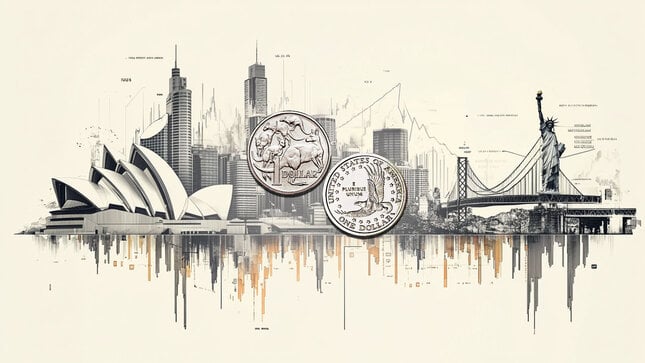Markets
Stocks finally caught a break — and ripped higher — after Trump hit the brakes on parts of the reciprocal tariff barrage. The S&P 500, which had been coughing up 500-point chunks like clockwork, snapped back like a pressure valve just got released. This wasn’t just relief — it was exhaustion giving way to euphoria. The market had been starved for any signal of sanity, and it finally got one.
Trump may have made the announcement, but Scott Bessent stepped in and took the wheel. He didn’t just clarify — he owned the narrative. Straight down the fairway: everyone but China reverts to the 10% baseline while negotiations kick back into gear. Sector-specific tariffs stay in play, but this isn’t chaos anymore — it’s starting to look like an actual strategy.
Feels like a full-on changing of the guard. Navarro and Lutnick? It's time to take a seat — preferably in a soundproof room. Bessent and the market-literate grown-ups need to run point from here. No one’s pretending we’ve got eyes on every move in the 70-country tariff chessboard, but someone clearly cracked open a calculator. This isn’t blind escalation anymore — it’s starting to look like a recalibration, not a runaway train.
Tail risk? Absolutely — there’s still a considerable amount of it with that 90-day fuse ticking down. But for now, it feels like we’ve hit reset… returning to the original mission: to level the playing field, not to scorch the system.
Did Trump blink? Damn right he did. But let’s be clear—it wasn’t equities that got to him. It was the bond market lighting up like a Christmas tree and the funding street flashing red.
This was all about the plumbing. Long-end yields blew out, repo started groaning, and the whole Treasury complex started trading like a broken machine. That kind of dislocation doesn’t fit with a Bessent-led Treasury — not even close. If Scott’s running point (as he should be), you can bet he’s reading those yield screens like a threat board and whispering directly in Trump’s ear.
For days, the question on the street was: what gets Trump to blink? Congress? A few thousand points off the Dow?
Nope. It was the moment the basis trade iceberg started to tip. When volatility rips through the long end, liquidity dries up, and repo trembles, you’re not just in “risk-off” anymore — you’re in malfunction territory.
And when Treasuries stop acting like Treasuries, everything breaks. That’s when even the most tariff-hardline White House realizes it is time to pump the brakes or risk a full-blown funding crisis.
This wasn’t about stocks. This was about systemic integrity — full stop.
The market didn’t just flinch, it screamed. And when the scream echoed through the funding markets, the narrative shifted in real-time to “Sell America Inc.” You don’t get that kind of dislocation in long-end yields — in the middle of a risk-off tape — without something deeper cracking.
Enough was likely enough. The alarm bells weren’t coming from the S&P. They were coming from the plumbing. And when the Treasury market starts to break character, policymakers listen — or they risk a full-blown confidence run.
Was the market rebound a surprise? Yeah… and no.
Since Monday’s market Armageddon and the ugly spill that followed, the street was betting Powell would blink first — not Trump. But let’s be honest, The Art of the Deal was never really off the table. It was just waiting in the wings while traders priced in the ugliest version of events: a runaway tariff train flattening the U.S. economy and dragging the global cycle down with it.
Now that Trump’s finally flinched, the street gets to start trimming some of that tail risk. That doesn’t mean we’re in the clear — not even close. But it is a pivot away from the cliff. If the White House can keep quiet for a minute and stop tossing policy grenades in the dark, this market might actually be able to breathe… maybe even lean back into risk with some conviction.
That’s a big if, of course. Trump is going to Trump. But for now, the edge of the cliff seems a lot further away.
We’re clawing our way back toward something that actually resembles a functioning market. There’s structure in the tape again. Liquidity is poking its head back in. Volatility is backing off just enough that you’re not sweating every tick on your P&L. Hedging may have cost a few dollars this week, but hey — a balanced book doesn’t feel like a ticking bomb anymore.
The pivot to a flat 10% universal tariff, with China still singled out for steeper treatment, aligns a lot more with Trump’s original campaign pitch. That matters, because investors were mentally prepared for this version of pain. Predictable pain always beats policy chaos.
Why the snapback?
Simple. A 10% tariff? Markets can handle that. Corporations pass some costs onto consumers, absorb some in margins, and adjust supply chains in the background. It’s frustrating, not catastrophic. Markets don’t require perfection — they need a strategy.
So yeah, Trump blinked. And sure, the tape will treat it that way. But me? I don’t care what label it gets. All that matters is that we’re not in full-blown panic anymore. This feels tradable again — not just duck-and-cover time.
But let’s not pretend it’s all clear skies.
Those 100%+ China tariffs are still locked in. That’s not a sideshow — that’s structural inflation risk and a slow leak on growth. The U.S. consumer might not feel it right now, but that pain’s in the pipeline, especially with limited substitutes for some of that import flow.
So yeah, this was the lifeline the markets needed. However, we’re not out of the woods yet. The tape is still twitchy. We’ve stepped back from the cliff, but the storm is still swirling.
Here’s hoping the next chapter brings more stability and fewer policy fire drills.
The dimon effect
Trump may have hit the brakes on the tariff juggernaut not because of Wall Street's drawdown per se, but because Jamie Dimon sounded the alarm on national TV. According to Trump himself, he watched Dimon’s interview with Maria Bartiromo — the one where the JPMorgan CEO warned that a recession now looks likely — and then decided to pause some of the tariff hikes.
That’s no small thing.
Dimon didn’t pull punches either. He called for progress, for calm, and for Treasury Secretary Scott Bessent to be given the runway to get real trade deals done — not just fire off headline skirmishes. He flagged Delta pulling guidance, warned of more companies following suit, and emphasized how swap markets, Treasuries, and equity volatility are already pricing in systemic stress.
His message? Take a breath, stop improvising tariffs, and let the professionals work the room.
If Trump really did take that to heart, then this pivot wasn’t about equity markets cracking — it was about the funding street sounding the alarm. When Jamie Dimon says you’re flirting with a recession and implicitly links it to Treasury auction volatility, even a president known for shrugging off market noise has to listen.
And yeah, there’s still a 10Y auction on deck. Everyone’s watching.
Markets may have gotten a lifeline here, but as Dimon said — it’s not over yet.
Honestly? Handing the reins to Bessent and sidelining Navarro and Lutnick is exactly what this market needed. Everyone on the Street respects Bessent — and for good reason. I mean, think about it: who else on this planet can seamlessly work with both George Soros and Donald Trump?
That’s all you really need to know.
He’s got the macro chops, the market instinct, and the political dexterity. If there’s anyone who can thread the needle between credible trade policy and capital market stability, it’s Bessent. With him in the room, the “art of the deal” doesn’t sound like campaign fluff — it actually starts to feel like a strategy.
Let’s just hope they let him drive without too many backseat tantrums.
The view
The Fed’s officially on the political clock now — whether Powell wants to play ball with Trump is irrelevant. The bond market was teetering on the edge this week, and the Fed just got served a dose of reality that’ll be hard to ignore. Liquidity was drying up; volatility was bleeding into the plumbing, and bond market reflexivity was AWOL. That’s not a policy debate — that’s a flashing red warning light.
I still don’t see five cuts, but I’d wager two or three are coming — and fast. Not because the data demands it, but because the market’s dictating it.
On the political side, we’re clearly entering a deeper economic bifurcation — think Axis vs Allies 2.0. And Bessent nailed it with his frame: “At the end of the day, we can probably reach a deal with our allies… then we can approach China as a group.”
His Fantasia analogy is spot on — China’s economy is like Mickey’s enchanted mop: it just keeps producing and dumping, buckets of excess capacity splashing into the global system with no off switch. It’s not about free trade anymore. It’s about system preservation.
We’re heading into a new phase — coordinated deals with allies, collective pressure on China, and a Fed now staring down a market that’s losing patience. The playbook is shifting. Fast.
SPI Asset Management provides forex, commodities, and global indices analysis, in a timely and accurate fashion on major economic trends, technical analysis, and worldwide events that impact different asset classes and investors.
Our publications are for general information purposes only. It is not investment advice or a solicitation to buy or sell securities.
Opinions are the authors — not necessarily SPI Asset Management its officers or directors. Leveraged trading is high risk and not suitable for all. Losses can exceed investments.
Recommended Content
Editors’ Picks

AUD/USD drops to 0.6350 as markets turn cautious on trade uncertainty
AUD/USD is falling back toward 0.6350 in Thursday's Asian trading amid fading optimism over a quick resolution to the US-China trade dispute. Meanwhile, a renewed US Dollar selling on looming trade uncertainty, concerning US, China and Japan could limit the pair's downside.

USD/JPY tumbles toward 142.50 amid US-Japan trade talks
USD/JPY closes in on 142.50, correcting sharply from over a one-week top set on Wednesday. Uncertainty over the US-Japan trade talks and the divergent BoJ-Fed policy expectations continue to offer a double-whammy to the pair amid a fresh bout of US Dollar selling.

Gold price bounces back above $3,350 on fading US-China trade deal optimism
Gold price regains positive traction abpve $3,350 in the Asian session on Thursday, snapping a two-day losing streak to the $3,260 area, or the weekly low touched the previous day. The optimism over a possible US-China trade deal fades quickly and revives demand for the safe-haven bullion.

Ethereum ETF sees boost as bulls target descending channel resistance
Ethereum gained 2% on Wednesday after US spot Ether ETFs recorded their largest inflows since February 4. However, the top altcoin could face a correction after experiencing a rejection at its 50-day Simple Moving Average.

Five fundamentals for the week: Traders confront the trade war, important surveys, key Fed speech Premium
Will the US strike a trade deal with Japan? That would be positive progress. However, recent developments are not that positive, and there's only one certainty: headlines will dominate markets. Fresh US economic data is also of interest.

The Best brokers to trade EUR/USD
SPONSORED Discover the top brokers for trading EUR/USD in 2025. Our list features brokers with competitive spreads, fast execution, and powerful platforms. Whether you're a beginner or an expert, find the right partner to navigate the dynamic Forex market.